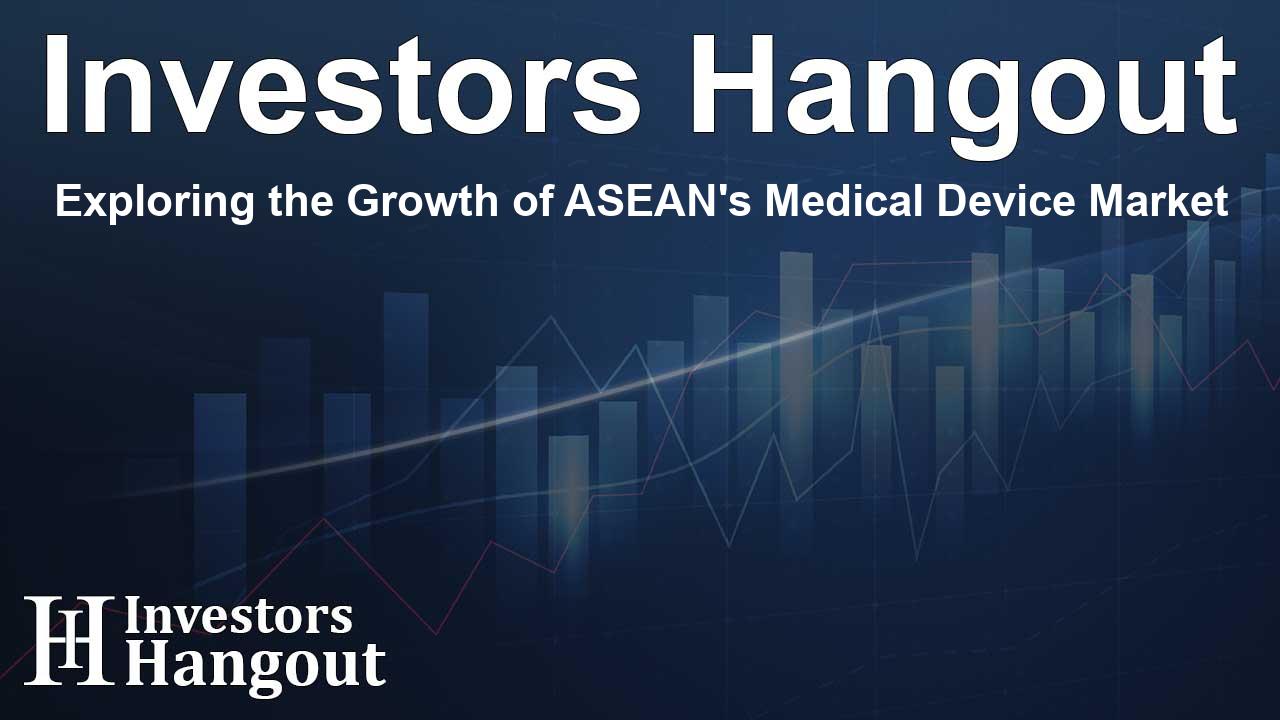Exploring the Growth of ASEAN's Medical Device Market

ASEAN Medical Device Market Overview
The medical device industry in the ASEAN region has experienced notable changes, evolving to become a significant player in global trade. A recent study illuminates the transformative shifts that have occurred, indicating a flourishing market valued at over $19 billion. This compelling report reveals much about the dynamics within the ASEAN healthcare environment.
Key Trends Shaping the Market
In recent years, the ASEAN bloc has emerged as a self-sufficient exporter of medical devices, dramatically altering the competitive landscape. The export values have shown a slight growth from approximately $19.1 billion in the earlier years to a projected $19.2 billion. These numbers, while indicative of modest growth, are part of a larger narrative about the region's increasing importance in the global MedTech supply chain.
Intra-ASEAN Trade Growth
Among the most noteworthy trends is the ascendance of intra-regional trade. Countries within the ASEAN bloc are now major suppliers to each other, fostering local production capabilities and reducing reliance on external sources. This shift towards a more interconnected marketplace is a deliberate strategy to enhance self-sufficiency, promoting economic resilience across the region.
Intense Competition Between Major Players
Competition has intensified between the United States and Greater China, both of which occupy leading positions within the global marketplace. The evolving strategies and actions of these major economies significantly influence market direction and forecasting as they vie for dominance in the medicare field.
Post-Pandemic Adjustments in South Korea
South Korea's market adjustments illustrate how external factors can reshape industry trends. The spike in demand for COVID-19 related diagnostics fueled exceptional growth, but as this particular need receded, the country’s export market realigned, showcasing the impacts of global health events on trade patterns.
A New Class of Exporters
Emerging nations such as India, Costa Rica, and Belgium have shown remarkable growth, indicating a diversification of supply chains. These new players are carving their place in the market, highlighting a shift in the dynamics of MedTech exports, whereby established leaders are no longer the only significant contributors.
Interesting Insights from the Recent Report
The report presents three fascinating statistics that shed light on the current state of the ASEAN medical device imports:
- China's Export Journey: Greater China's export changes depict an extraordinary journey, marked by a significant surge in 2021, followed by a considerable decline by 2023, ultimately resuming growth again in 2024.
- The Market Control by Top Players: The leading three exporters—USA, Greater China, and the ASEAN bloc—combinedly account for an astonishing 53.3% of the total market share, emphasizing the concentrated nature of the industry.
- Dramatic Growth from Belgium: Belgium reported a staggering export growth of over 153% in one year, demonstrating that smaller markets can rapidly enhance their presence on a global scale.
Questions Answered by the Report
Which region has seen the most substantial growth in MedTech exports to ASEAN?
The ASEAN bloc itself has recorded the most significant growth in intra-regional exports, indicating a robust trend towards localized production in the healthcare sector.
Who was the leading exporter to ASEAN in the recent year?
The United States maintained its position as the top MedTech exporter in 2024, edging out Greater China marginally in a fiercely competitive landscape.
What factors contributed to changes in South Korea's market performance?
South Korea's notable shifts stemmed from changing demands post-COVID-19, as the urgent need for diagnostics subsided, leading to a normalization of its export figures.
What is the competitive landscape at the top of the market?
The rivalry between the United States and Greater China defines the top of the market, characterized by contrasting stability and volatility in their export trends.
Frequently Asked Questions
What is the main focus of the ASEAN MedTech market report?
The report emphasizes the growth and transformation of the ASEAN medical device market, identifying key trends and investment opportunities.
Why is intra-ASEAN trade significant?
This trade is crucial as it indicates a shift towards regional self-sufficiency and supports local economies by enhancing manufacturing capabilities.
What impact did COVID-19 have on South Korea's exports?
COVID-19 dramatically increased demand for diagnostics, which initially boosted South Korea's export figures before they normalized.
How do emerging markets affect the MedTech landscape?
Emerging markets bring new opportunities and competition, diversifying the landscape and prompting established players to adapt their strategies.
What does the future hold for the ASEAN medical device market?
As intra-regional trade expands and new players enter the market, the future looks promising for sustained growth and innovation in the ASEAN MedTech sector.
About The Author
Contact Logan Wright privately here. Or send an email with ATTN: Logan Wright as the subject to contact@investorshangout.com.
About Investors Hangout
Investors Hangout is a leading online stock forum for financial discussion and learning, offering a wide range of free tools and resources. It draws in traders of all levels, who exchange market knowledge, investigate trading tactics, and keep an eye on industry developments in real time. Featuring financial articles, stock message boards, quotes, charts, company profiles, and live news updates. Through cooperative learning and a wealth of informational resources, it helps users from novices creating their first portfolios to experts honing their techniques. Join Investors Hangout today: https://investorshangout.com/
The content of this article is based on factual, publicly available information and does not represent legal, financial, or investment advice. Investors Hangout does not offer financial advice, and the author is not a licensed financial advisor. Consult a qualified advisor before making any financial or investment decisions based on this article. This article should not be considered advice to purchase, sell, or hold any securities or other investments. If any of the material provided here is inaccurate, please contact us for corrections.
